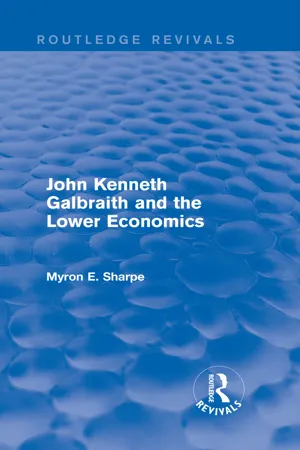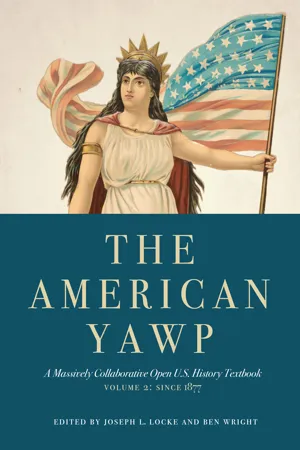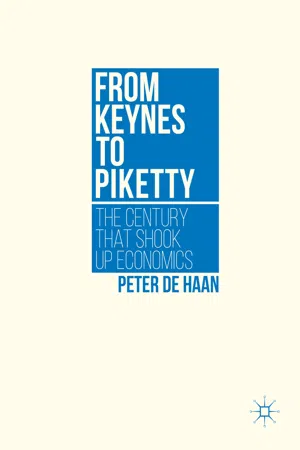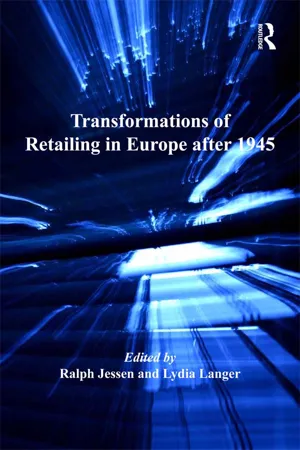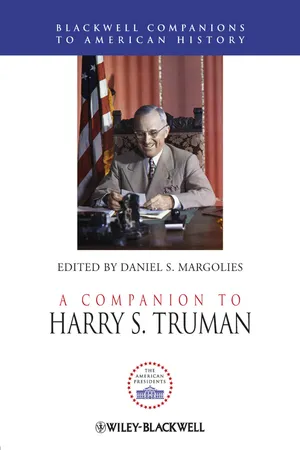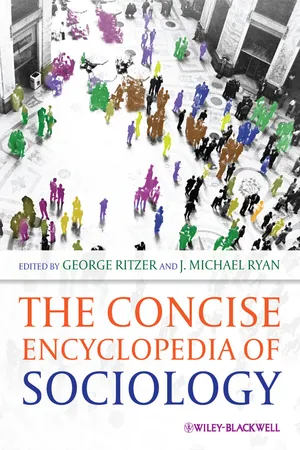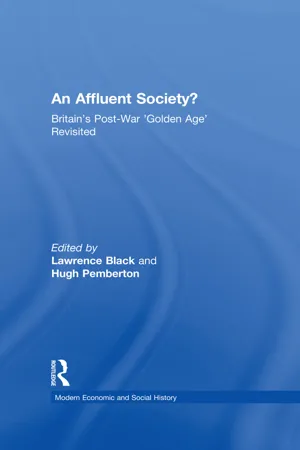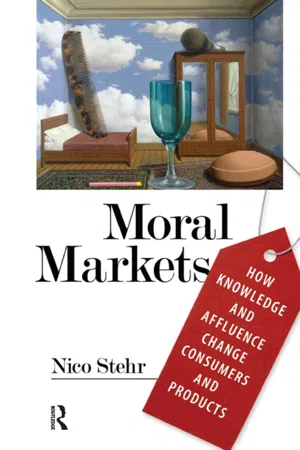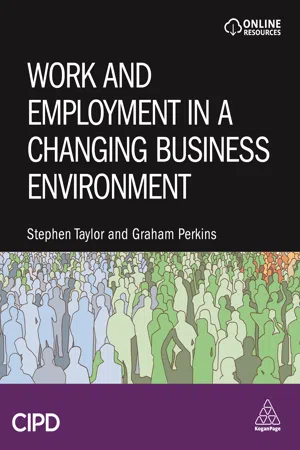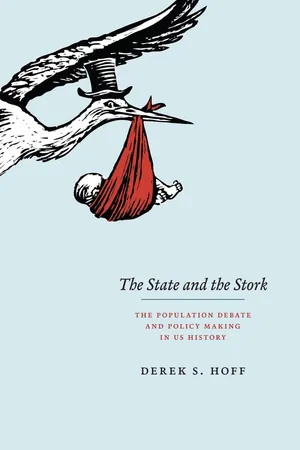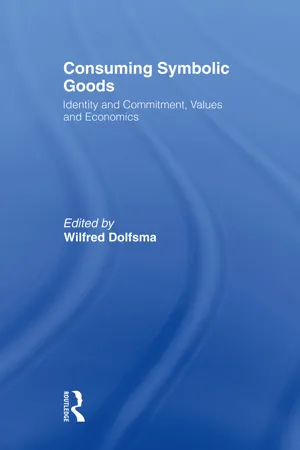History
The Affluent Society
"The Affluent Society" is a book by economist John Kenneth Galbraith that critiques the post-World War II American economy. Galbraith argues that despite widespread prosperity, society's focus on consumerism and material wealth has led to neglect of public goods and services, such as infrastructure and education. He calls for a reevaluation of societal priorities to address these shortcomings.
Written by Perlego with AI-assistance
Related key terms
Related key terms
1 of 4
Related key terms
1 of 3
12 Key excerpts on "The Affluent Society"
- eBook - ePub
- Myron E. Sharpe(Author)
- 2017(Publication Date)
- Routledge(Publisher)
Chapter 3 The Affluent SocietyTHE AFFLUENT SOCIETY is a deeply critical book and marks a sharp turn in Galbraith's attitude toward the American economy and society. By 1958, the year of publication, the first flush of postwar prosperity had worn off. The economic impetus of the Korean War had been spent and the country was experiencing the doldrums of the Eisenhower recession of 1957-58. The passage of time had shown that deep-seated problems existed which could not be solved by conventional means. The Affluent Society was one of the first books to come to grips with a fundamental irony of modern capitalism. An enormously productive economic plant had been built up that had raised a majority of the population out of the depths of poverty for the first time in history. Technology enabled men to produce an abundance of goods. The expansion of the gross national product had become a test of economic success; and as it rose from year to year, albeit with some pauses in times of recession, economists and much of the public thought that the ultimate solution to economic problems had been found. The majority of People did not have to worry about food, clothing and shelter but instead were concerned with cars and home appliances. America had become an affluent society, but with all the abundance there was still something gravely wrong. Goods multiplied but the quality of life diminished. Cities became less liveable; clogged roads made travel more difficult; public transportation deteriorated; education and medical services faced a crisis; welfare services became manifestly inadequate. A substantial part of the population remained poor despite the annual rise in gross national product. To this grave social imbalance. Galbraith addressed The Affluent Society.The end of the economic problem?
Galbraith's analysis proceeded once more with a contrast between a competitive economy and a highly concentrated one. He again emphasized the insecurity inherent in a competitive society which no one but the economic theorist regarded with equanimity. He restated his rationale of business concentration. "The specter that has haunted the economist has been the monopoly seeking extortionate gains at the public expense. This has dominated his thoughts. The less dramatic figure, the businessman seeking protection from the vicissitudes of the competitive economy, has been much less in his mind. That is unfortunate, for the development of the modern enterprise can be understood only as a comprehensive effort to reduce risk" (p. 98). - eBook - ePub
The American Yawp
A Massively Collaborative Open U.S. History Textbook, Vol. 2: Since 1877
- Joseph L. Locke, Ben Wright(Authors)
- 2019(Publication Date)
- Stanford University Press(Publisher)
26 The Affluent SocietyLittle Rock schools closed rather than allow integration. This 1958 photograph shows an African American high school girl watching school lessons on television. Library of Congress.I. IntroductionIn 1958, Harvard economist and public intellectual John Kenneth Galbraith published The Affluent Society . Galbraith’s celebrated book examined America’s new post–World War II consumer economy and political culture. While noting the unparalleled riches of American economic growth, it criticized the underlying structures of an economy dedicated only to increasing production and the consumption of goods. Galbraith argued that the U.S. economy, based on an almost hedonistic consumption of luxury products, would inevitably lead to economic inequality as private-sector interests enriched themselves at the expense of the American public. Galbraith warned that an economy where “wants are increasingly created by the process by which they are satisfied” was unsound, unsustainable, and, ultimately, immoral. “The Affluent Society,” he said, was anything but.1While economists and scholars debate the merits of Galbraith’s warnings and predictions, his analysis was so insightful that the title of his book has come to serve as a ready label for postwar American society. In the two decades after the end of World War II, the American economy witnessed massive and sustained growth that reshaped American culture through the abundance of consumer goods. Standards of living—across all income levels—climbed to unparalleled heights and economic inequality plummeted.2And yet, as Galbraith noted, The Affluent Society had fundamental flaws. The new consumer economy that lifted millions of Americans into its burgeoning middle class also reproduced existing inequalities. Women struggled to claim equal rights as full participants in American society. The poor struggled to win access to good schools, good healthcare, and good jobs. The same suburbs that gave middle-class Americans new space left cities withering in spirals of poverty and crime. The Jim Crow South tenaciously defended segregation, and black Americans and other minorities suffered discrimination all across the country. - eBook - ePub
From Keynes to Piketty
The Century that Shook Up Economics
- Peter de Haan(Author)
- 2016(Publication Date)
- Palgrave Macmillan(Publisher)
The Affluent Society is also a book full of bold, often controversial, observations on the conventional wisdom of mainstream economics and of die-hard political convictions.Galbraith didn’t like mathematical approaches. He made economics accessible to a larger public. This was probably inspired by the experience with the publication of A Theory of Price Control (1952), a scholarly piece of work. He told a New York Times Book Review reporter that most people who had read it said that it was the best book he had ever written. Galbraith then told the reporter, ‘The only difficulty is that five people had read it, may be ten … I set out to involve a larger community.’ Supported by his experience as an editor of Fortune magazine, he achieved what he had in mind. The Affluent Society was on the New York Times bestsellers list for some 30 weeks.The idea for The Affluent Society was born in the early 1950s when Galbraith studied poverty in America. It was the contrast between rich and poor which triggered the idea. Galbraith told the story of America’s wealth and what it meant for American society. The book’s purpose was to describe the way economic attitudes are rooted in the poverty, inequality and economic peril of the past, after which the partial and implicit accommodation to affluence was examined.In the introduction to the fortieth anniversary edition of 1998, Galbraith looked back at the book’s original text to establish in which aspects he was right, and in which he was wrong. From a theoretical point of view, he concluded that, sadly, economic writing and teaching instil attitudes and beliefs that resist accommodation to a changing world. In hindsight, Galbraith said that he would have more strongly emphasised the inequality in income, as it was getting worse. He was confirmed in his belief that the productive process incorporates the means by which wants are created, and these are further sustained by fashion, social aspiration and simple imitation: the most important and most evident source of consumer demand is the advertising and salesmanship of those providing the product. In earlier editions Galbraith expressed concern about the dangers of inflation caused by the then-raging wage–price spiral. When writing the new introduction, there was low inflation combined with low unemployment; a much celebrated circumstance, Galbraith added. Hence, the original chapter on inflation was adjusted. - Lydia Langer, Ralph Jessen(Authors)
- 2016(Publication Date)
- Routledge(Publisher)
2 Visions of material comfort and abundance, however, were not the preserve of market capitalism. All modern mass ideologies promoted them. Freedom of choice similarly gathered support from a range of cultural and political sources that stretched from democratic traditions and pragmatism, to youth culture. Supermarkets are held up as signs of a new monoculture bred by consumer society. Does a broader history bear out this dismal thesis? Placing affluence and choice in a longer, more comparative perspective shows the dangers of telling the story of consumer society as one of post-1945 affluence and rampant individualism. Self-service arises from a richer hinterland of values and practices.1 From the extensive literature, see Juliet B. Schor, The Overspent American: Why We Want What We Don’t Need (New York: Basic Books, 1999); Barry Schwartz, The Paradox of Choice: Why More Is Less (New York: Ecco, 2005); Avner Offer, The Challenge of Affluence: Self-Control and Well-Being in the United States and Britain since 1950 (Oxford: Oxford University Press, 2006).2 John Kenneth Galbraith, The Affluent Society (New York: Mentor Books, 1958). See also Daniel Horowitz, The Anxieties of Affluence: Critiques of American Consumer Culture, 1939 –1979 (Amherst, MA: University of Massachusetts Press, 2004).Affluence
No society has typified consumer society more than the United States after 1945. Anthropologists have stressed that affluence is a relative concept and can be found in many earlier societies. Nonetheless, it was post-war America that took ownership of the affluent society, the title of J.K. Galbraith’s bestseller, and that has set the terms of debate since. A progressive and Keynesian, Galbraith had been deputy head of the Office of Price Administration during the Second World War, before moving back to Harvard. Galbraith’s thesis had three core components. The Affluent Society, he wrote, amounted to a radical break with the past and was the result of a new growth-oriented production machine born by the war. Second, in his famous phrase, it spawned ‘private opulence amidst public squalor’. There was, he argued, a functional tie between the rising wave of private consumer goods and the draught of public services and civic-mindedness: one caused the other. Finally, Galbraith warned, The Affluent Society was unsustainable, financially, psychologically and environmentally. It was promoting an ‘inherently unstable process of consumer debt creation’. It favoured ‘tenuous wants’ over ‘solid needs’ in a way that left people barren and lost at the same time as they were ‘stockpiling’ consumer goods. And it polluted the environment; although only in a few passages, Galbraith was amongst the first to link the critique of consumer society to a concern for what is now called sustainability.3- eBook - ePub
The New Left and the 1960s
Collected Papers of Herbert Marcuse, Volume 3
- Herbert Marcuse, Douglas Kellner(Authors)
- 2004(Publication Date)
- Routledge(Publisher)
I think we are faced with a situation in which this advanced capitalist society has reached a point where quantitative change can technically be turned into qualitative change, into authentic liberation. And it is precisely against this truly fatal possibility that The Affluent Society, advanced capitalism, is mobilized and organized on all fronts, at home as well as abroad.Before I go on, let me give a brief definition of what I mean by an affluent society. A model, of course, is American society today, although even in the United States it is more a tendency, not yet entirely translated into reality. In the first place, it is a capitalist society. It seems to be necessary to remind ourselves of this because there are some people, even on the left, who believe that American society is no longer a class society. I can assure you that it is a class society. It is a capitalist society with a high concentration of economic and political power; with an enlarged and enlarging sector of automation and coordination of production, distribution and communication; with private ownership in the means of production, which however depends increasingly on ever more active and wide intervention by the government. It is a society in which, as I mentioned, the material as well as cultural needs of the underlying population are satisfied on a scale larger than ever before – but they are satisfied in line with the requirements and interests of the apparatus and of the powers which control the apparatus. And it is a society growing on the condition of accelerating waste, planned obsolescence and destruction, while the substratum of the population continues to live in poverty and misery.I believe that these factors are internally interrelated, that they constitute the syndrome of late capitalism: namely, the apparently inseparable unity – inseparable for the system – of productivity and destruction, of satisfaction of needs and repression, of liberty within a system of servitude – that is to say, the subjugation of man to the apparatus, and the inseparable unity of rational and irrational. We can say that the rationality of the society lies in its very insanity, and that the insanity of the society is rational to the degree to which it is efficient, to the degree to which it delivers the goods. - eBook - ePub
- Daniel S. Margolies(Author)
- 2012(Publication Date)
- Wiley-Blackwell(Publisher)
Part IV The Truman Presidency and the Shaping of Postwar American SocietyPassage contains an image Chapter Nine Truman, Reconversion, and the Emergence of the Post-World War II Consumer Society Susannah Walker
No textbook or survey course in modern U.S. history fails to note the tremendous economic growth and affluence that characterized the post-World War II era. Fueled by high wartime production and employment, and followed by rapid industrial demobilization and reconversion to civilian production, this economic growth went hand in hand with ever-rising consumer demand for suburban housing, cars, kitchen appliances, televisions, and other goods. The model of prosperity that developed to justify this system rested upon an upward spiral of mass production and mass consumption, and promised a continuously improving “American Standard of Living” for an increasingly broad swath of the American population. In 1958, contemporary critic John Kenneth Galbraith compared this consumption/production cycle to a squirrel wheel in his best-selling The Affluent Society (1998: 130). Subsequent scholars have recognized that the idealized standard of living was not equally available to all Americans in the late 1940s and 1950s (Cohen, 2004; Coontz, 1992; Harrington, 1962). In spite of these skeptical views, some historical overviews of this period, while acknowledging inequality during this era, continue to suggest that the postwar transition towards The Affluent Society proceeded smoothly with widespread popular support (Chafe, 2010; Rosenberg and Rosenberg, 2002). Scholars who have examined this topic more closely, however, have found a much more uncertain, bumpy, and contested story.Harry S. Truman's role in that story is crucial, for his years as president (1945–53) covered a time when the relationship between government, business, labor, and consumers entered an extremely tumultuous period and the contours of what would become The Affluent Society were being theorized and implemented. Some scholarship on Truman characterizes him as poorly advised and bungling on reconversion policy (Donovan, 1977; Ferrell, 1994). More often, though, scholars of the post-World War II reconversion period generally give Truman credit (despite some mistakes) for overseeing a demobilization process that was smoother and less painful than the post-World War I reconversion had been (Ballard, 1983; Hamby, 1995; Jacobs, 2005). One notable exception to this is Michael Flamm (1996), who thinks Truman administration actions rooted in the desire to avoid a depression such as the one that followed World War I (notably what Flamm sees as the premature removal of price controls) was detrimental to effective reconversion policy in the World War II context (pp. 335–7). - eBook - ePub
- George Ritzer, J. Michael Ryan(Authors)
- 2010(Publication Date)
- Wiley-Blackwell(Publisher)
The Good Society: The Human Agenda (1996). In fact, Galbraith coined and popularized phrases such as “The Affluent Society,” “conventional wisdom,” and “countervailing power.”In American Capitalism , Galbraith debunked myths about the socially optimal effects of free markets and critiqued an increasingly oligopolistic economy characterized by power concentration. A nation's economy would stabilize if countervailing forces keep corporations and unions in equilibrium as they exert pressures on each other for profits and wages. In The New Industrial State , Galbraith expanded his theory of corporations and argued that the notion of a perfectly competitive firm must be replaced by one vying for market shares (and not profit maximization) via conventional (vertical integration, advertising, and product differentiation) and unconventional means (bureaucratization and capture of political favor).In his most famous book, The Affluent Society , Galbraith attacked the culturally hegemonic “American way of life” and contrasted private-sector affluence with public-sector poverty that exacerbated income disparities. According to him, post-World War II America will thrive if the government spent public taxes on infrastructure and education, a move that political commentators feel contributed to the failure of the War on Poverty. In an updated version, The Good Society , Galbraith argued that America had become a “democracy of the fortunate” where overproduction of consumer goods had increased the perils of both inflation and recession.Galbraith remained a staunch Kenyesian and institutionalist throughout his life and believed in the importance of public education, the political process, and the provision of public goods. a sentiment best expressed from The Affluent Society - eBook - ePub
An Affluent Society?
Britain's Post-War 'Golden Age' Revisited
- Lawrence Black, Hugh Pemberton(Authors)
- 2017(Publication Date)
- Routledge(Publisher)
9 Never having had so many goods, it was maintained, was not the same as never having had it so good.Hoggart’s The Uses of Literacy iterated the point, maintaining that social change whilst of quantitative benefit, involved a cultural impoverishment and the loss of much of value in working-class culture. The paperback wore a LS Lowry cover – both Hoggart and Lowry’s pictures of the people nostalgically evoked vanishing landscapes.10 Wilmott and Young’s studies of Londoners’ suburban dispersal, published by Penguin after 1961, highlighted similar themes - the loss of community and kinship. In another negative title, The Affluent Sheep, journalist Robert Millar reported British consumers unworthy of affluence; a largely apathetic flock under the sway of advertising and big business. Downbeat as contemporary usage of ‘affluence’ was, its hegemony was such that poverty was forgotten, as was the fact that for many Britons the symbolic goods of affluence were more an aspiration than achievement.11 Even its critics contested affluence’s qualities not existence. But real or imagined, the consequences of affluence were feared.Far from anything desirable, affluence was a by-word for what seemed wrong in society. Attorney General Sir John Hobson told Hampstead Young Conservatives (YCs) early in 1964 that ‘The Affluent Society was one of the main causes of Britain’s rocketing post-war crime figures … there is far greater temptation in an affluent society’. Bristol’s Consumer Group reported that County Court actions for recovery of hire purchased goods more than doubled in the decade to 1962. By 1970, a perturbed Barbara Wooton paired affluence with permissiveness and acquisitiveness as Contemporary Britain’s value system.12 - eBook - ePub
Moral Markets
How Knowledge and Affluence Change Consumers and Products
- Nico Stehr(Author)
- 2015(Publication Date)
- Routledge(Publisher)
the struggle for existence, always has been hitherto the primary, most pressing problem of the human race.… If the economic problem is solved, mankind will be deprived of its traditional purpose. Will this be a benefit? If one believes at all in the real values of life, the prospect at least opens up the possibility of benefit. Yet I think with dread of the readjustment of the habits and instincts of the ordinary man, bred into him for countless generations, which he may be asked to discard within a few decades.… Thus for the first time since his creation man will be faced with his real, permanent problem — how to use his freedom from pressing economic cares, how to occupy the leisure, which science and compound interest will have won for him, to live wisely and agreeably and well.An even more pervasive apprehension of the risks associated with any widespread material abundance and affluence — that is, not merely of an elite but of substantial segments of society whose families had never experienced being “well-off” — began in the early years of the late 1950s and early 1960s; that is, once the economic repercussions of the Second World War brought considerable prosperity, comparatively speaking, to postwar generations. Although the specter of “satiation” had been raised from time to time in the past, it now appeared that satiation was a real possibility and could only be deferred by a few years. The intensive debate about the virtues of material abundance of Western societies mutated into theories of “affluent societies” (Galbraith, 1958 ) or “mass consumption societies” (Katona, 1964 ), surrounded and haunted by “hidden persuaders” (Packard, 1957 ).The basic tenor of many influential discussions of mass consumption, or the homogeneous demand for standard commodities and services, did not see many beneficial societal outcomes in the growing private affluence. John Kenneth Galbraith, for example, deplored the growing asymmetry between public and private wealth to the detriment of public richness. He combines a critique of the prevailing consumer culture, and the absence of any public virtues from rampant spending patterns by newly affluent middle-class families, with the demand for the state to intervene and restore a balance between private and public spending. In a retrospective assessment of his study more than forty years later, Galbraith (1998) 2 - Stephen Taylor, Graham Perkins(Authors)
- 2021(Publication Date)
- CIPD - Kogan Page(Publisher)
Affluence is a controversial subject area in sociology. This is partly because of disagreement about its extent and partly because of disagreement about its long-term consequences. As a rule, sociologists have tended to show more interest in the impact of the increasing inequality that has accompanied the rise of affluence than about the impact of increasing affluence itself.Affluence is usually defined as equating to the standard of living enjoyed by a society or the extent to which people are able to ‘live well’. It is associated with the expression ‘disposable income’ and the evolution of societies in which a good proportion of the population forms a ‘middle class’ which has income left over after providing for its basic needs.The term thus refers to the amount of income remaining after essential needs – housing, heating, water, food, transport to work, basic medicines, etc – have been met. The term ‘threshold of need’ is sometimes used in this context, an affluent household being defined as one that has sufficient resources available to spend on goods and services that are discretionary in nature and provide pleasure or enhance social status.Affluence is not the same thing as income. Income can be rising, but if this is accompanied by faster rises in the prices of essential goods, the level of affluence falls. While writers tend to refer to whole societies as being affluent to a greater or lesser degree, there is of course vast disparity across societies. Some people are much more affluent than others, and the direction of travel is not towards greater affluence for everyone all of the time. In recent years, thanks to the financial crisis of 2008 and the subsequent recessionary years, followed by the more recent economic damage caused by the Covid-19 pandemic, many countries have seen stagnating and falling income levels.- eBook - ePub
The State and the Stork
The Population Debate and Policy Making in US History
- Derek S. Hoff(Author)
- 2012(Publication Date)
- University of Chicago Press(Publisher)
Americans of all political stripes celebrated a new secular religion of never-ending economic growth. According to many politicians, economists, and intellectuals, recurrent prosperity would finance victory in the Cold War, smooth over class conflict, and usher in an age of permanent abundance. The pursuit of economic growth became official government policy, and leading economists and historians wrote books with titles such as The Affluent Society and People of Plenty. 2 Those who thought closely about the population question, then, had to grapple with the meaning of population growth in a society newly enjoying mass abundance. Those enthusiastic about the Baby Boom credited it for spurring aggregate demand and creating abundance, and also latched onto a new optimism emanating from the natural sciences about the long-term supply of natural resources. At the same time, widespread skepticism about population growth remained not only among the population-policy community but also among a wider swath of economists and conservationists. The skepticism shifted from the prewar years, however. Although many still predicted that an excess people would exhaust raw materials, or, along Stable Population Keynesian lines, harm individual economic welfare, the aesthetic or quality-of-life critique of population growth rose in prominence. This critique reflected the massive social and economic changes of postwar America, epitomized by a shift in emphasis from production to consumption. It was also in step with a liberal critique of American mass society, materialism, and conformity then in vogue among intellectuals. Historians have described how mounting wealth—and the assumption that American society had conquered the task of meeting the basic necessities of life—spurred greater interest in the pursuit of the Good Life - eBook - ePub
Consuming Symbolic Goods
Identity and Commitment, Values and Economics
- Wilfred Dolfsma(Author)
- 2013(Publication Date)
- Routledge(Publisher)
The Post Affluent Society Amitai EtzioniINTRODUCTION
Discomfort about the overarching goal of capitalist economies, and the idea that achieving ever higher levels of consumption of products and services is a vacuous goal, has been with us since the onset of industrialization (Shi 2003). Criticism of consumerism was common among followers of countercultures. They sought a lifestyle that consumed and produced little, at least in terms of marketable objects, and sought to derive satisfaction, meaning, and a sense of purpose from contemplation, communion with nature, bonding with one another, et cetera (Musgrove 1974). A significant number of members of Western societies embraced a much-attenuated version of the values and mores of the counterculture. Inglehart found that “the values of Western publics have been shifting from an overwhelming emphasis on material well-being and physical security toward greater emphasis on the quality of life” (Abramson and Inglehart 1995: 19).Personal consumption, however, continued to grow (Lebergott 1993). Still, the search for alternatives to consumerism as the goal of capitalism continues to intrigue people. I focus here on one such alternative, referred to as “voluntary simplicity” (Paehlke 1989, Schor 1991). “Voluntary simplicity” refers to people choosing — out of free will — to limit expenditures on consumer goods and services and to cultivate non-materialistic sources of satisfaction and meaning.The criticism of consumerism and the quest for alternatives are as old as capitalism itself. However, the issue needs revisiting for several reasons. The collapse of non-capitalist economic systems has led many to assume that capitalism is the superior system and therefore, to refrain from critically examining its goals. But capitalism has defects of its own (Handy 1998). Furthermore, as so many societies with rapidly rising populations now seek affluence as their primary domestic goal, the environmental, psychological and other issues raised by consumerism are being faced on a scale not previously considered. For instance, the undesirable side effects of intensive consumerism that once primarily concerned highly industrialized societies are now faced in a number of other countries. Finally, the transition from consumption tied to satisfaction of what are perceived as basic needs (secure shelter, food, clothing and so on) to consumerism (the preoccupation with gaining ever higher levels of consumption, including a considerable measure of conspicuous consumption of status goods), seems to be more pronounced as societies become wealthier. Hence, a reexamination of the goals and lifestyles of mature capitalist societies is particularly timely. Indeed, this may well be an environment particularly hospitable for voluntary simplicity.
Index pages curate the most relevant extracts from our library of academic textbooks. They’ve been created using an in-house natural language model (NLM), each adding context and meaning to key research topics.
Explore more topic indexes
Explore more topic indexes
1 of 6
Explore more topic indexes
1 of 4
